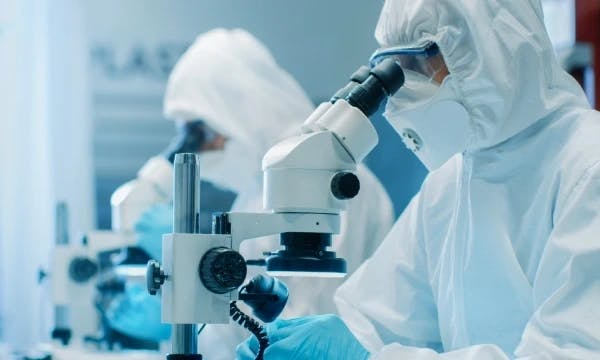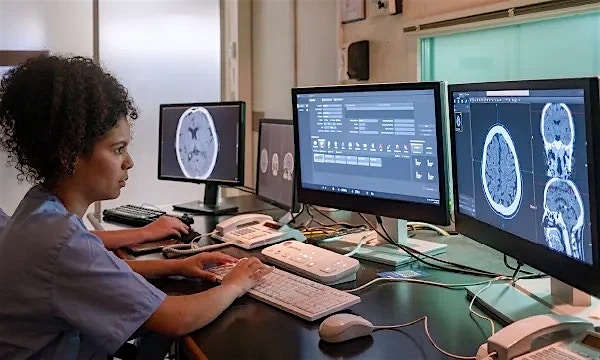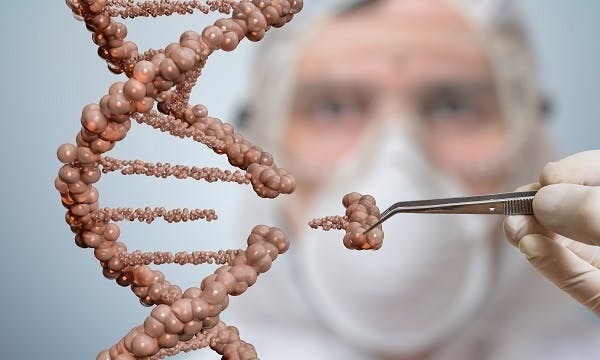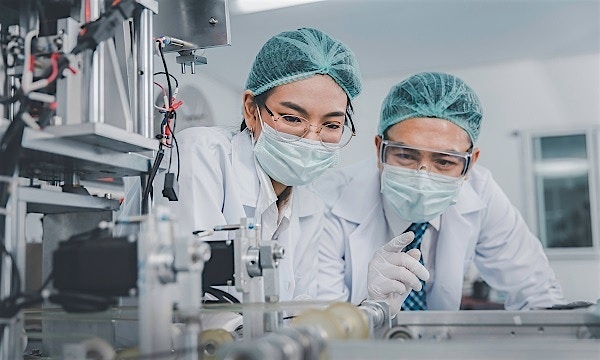Where Virtual Meets Reality in Healthcare Technology
Technology is reshaping the medical devices industry in remarkable ways. Today's medtech companies utilize advanced sensors and IoT capabilities to develop devices that enable remote patient monitoring and deliver personalized treatment plans tailored to each patient's specific needs.
Beyond connected devices, virtual reality and simulation tools are revolutionizing the way healthcare professionals train. These technologies enhance surgical precision, helping medical teams refine their procedures and ultimately leading to improved patient outcomes.
Our medtech solutions bring together the latest innovations in AI/ML, cloud computing, analytics, blockchain and virtual reality. Through our sustenance engineering and CARE™ solutions, we help you maximize your technology investments while creating exceptional experiences for both patients and providers.

Our Solutions for MedTech
Our medical technology solutions integrate advanced technologies into devices and systems providing personalized patient and provider experiences.
Drive innovation, efficiency and precision for your next-gen medical devices
Wearables, connected medical devices, AI-driven strategies and cloud are driving innovation in MedTech.
Make data-driven decisions with HCLTech utilizing efficiencies with cloud, automation and AI strategies.
text
Drive innovation, efficiency and precision for your next-gen medical devices
Advancements in technologies are opening the doors to innovations in MedTech like never before. AI, automation, cloud and data are creating opportunities for companies to create new customer-focused products, platforms and experiences.
HCLTech can provide you access to worldwide R&D labs and dedicated teams of specialists with a constant eye on global rules and regulations within MedTech so that you can continue to drive innovation and expansion.
Services and solutions:
- Mobile apps & SAMD (Class I, II, III)
- AI for devices
- LIMS and lab systems management
- Product development solutions with an understanding of regulatory needs
- Accurate, efficient and effective testing solutions driven by automation
- Worldwide network of labs including environment test labs, mechanical verification labs, tear down labs, prototyping, safety, engineering, etc.
- Global Centers of Excellence for In Vitro Diagnostics (IVD), Computer-aided Engineering (CAE), product lifecycle management (PLM), AI, product cost management (PCM) and more
Manage quality and regulatory compliance
Focus on compliance, certification, regulatory submission and audit, customer complaints, adverse events, product recalls, failure investigations and changes in regulations.
HCLTech has the experience and frameworks to help.
text
Manage quality and regulatory compliance
As a MedTech company, you can’t take your eye off the ever-changing environment of global regulations and compliance.
HCLTech provides our MedTech clients with a wide portfolio of solutions to help you manage compliance, adverse event tracking and failures, submission, audits and more.
Services and solutions:
- Quality Management Systems (QMS)
- Regulatory planning, submission and compliance: USFDA, EUMDR/IVDR, CDSCO India, PAL, CFDA, REACH, RoHS, CMR. PROP 65, PFAS
- Corrective and Preventive Actions (CAPA) management
- Labeling and packaging
- Design History File (DHF) product / software remediation
- Product recalls and quality analytics
- AI and ML for product development
- Strategic automation to reduce human error and save time with smart labeling and Automated Regulatory Intelligence Content Authoring (ARICA)
- Platforms focused on accuracy and compliance
COEs and resources
- Global Centers of Excellence for regulatory, packaging and labeling including Restriction of Hazardous Substances (RoHS) testing
Get experienced assistance with your clinical trials
The clinical trial process is extremely important to MedTech companies. With all the moving parts, it’s critical to have an experienced partner.
Work with HCLTech to help with clinical evaluations during the launch of new products and throughout their lifecycle.
text
Get experienced assistance with your clinical trials
Compliance is a key component to successful clinical trials, from product launches and throughout the lifecycle of your products.
HCLTech has developed offerings specific to the challenges companies face during this process.
Services and solutions:
- Clinical trial evaluation, writing services and data management
- Safety and adverse event management
- Patient recruitment, engagement and support
- Study tech support and hospital clinical support
- Data-Integration-as-a-Service (DIaaS)
COEs and resources
- Global Centers of Excellence for medical affairs and clinical trials
Intelligently manage your supply chain
Effectively manage supply chain constraints and manufacturing issues. Make data-driven predictions of finished goods forecasting for sales planning.
Our advisory and technology services are tailored to the specific needs of the MedTech industry.
text
Intelligently manage your supply chain
Understanding and managing your supply chain is critical to the success of any MedTech company. Having the right data at your fingertips to make the best decisions helps you save critical resources.
HCLTech helps you intelligently mange your supply chain to limit risk and increase accuracy with our portfolio of services and solutions.
Services and solutions:
- Supply chain network optimization
- AI-driven warehouse optimization
- Low-code / no-code warehouse management framework
- Transportation route optimization
- Blockchain-enabled serialization and traceability
- Supply chain process consulting
- Warehousing and logistics management
Optimize your manufacturing capabilities
Build and optimize your next-gen manufacturing processes using advances such as Extended Reality (XR), Internet of Things (IoT), digital plant management and sustainability solutions.
Our team of manufacturing experts will help you combine the best of new technologies with proven best practices to create a sustainable manufacturing process that’s future-ready.
text
Optimize your manufacturing capabilities
Work with a partner that will help you quicky optimize advances in technology for your manufacturing capabilities including AI, AR/XR, IoT and digital plant management.
Services and solutions:
- Plant engineering and logistics
- Equipment maintenance and calibration
- Low-volume prototyping/li>
- Automated equipment testing
- Smart Factory, Industry 4.0, Manufacturing Execution System (MES) and Manufacturing Operations Management (MOM)
- Robotics and 3D printing
COEs and resources
- Level 2 and 3 CoEs to assist with critical manufacturing capabilities
Launch new products with confidence
A successful product launch has 3 key components: an informed sales team, targeted marketing and patient engagement.
We have a global staff ready to augment your launch staff and provide ongoing support.
text
Launch new products with confidence
HCLTech provides specialized services for product launch and sales along with patient engagement and concierge services for improved patient satisfaction and retention.
Services and solutions:
- Customer relationship and experience management (CRM/CXM)
- Sales training and support
- Customer support and contact center services
- Sample management
- Patient concierge, adherence and engagement
- Tech support including device provisioning
- Patient reimbursement
- Custom portals for healthcare professionals and patients
- Digital marketing consulting
- Software-as-a-Service (SaaS)
We think these topics might interest you
Success Stories from Our Work in MedTech
Learn how HCLTech helps MedTech companies harness technology to drive innovation.
Your Trusted MedTech Partner for More than Two Decades
Our deep experience in medtech engineering makes us a preferred strategic partner for leading firms worldwide.
We've worked on everything from complex electromechanical devices to disposables, surgical equipment to implantable devices (both active and non-active), point-of-care systems, in vitro diagnostics (IVD) and laboratory diagnostics devices, as well as fully connected device ecosystems. Our expertise covers the full spectrum of medical device solutions.
HCLTech employees dedicated to life sciences and healthcare solutions
Making a Name Among Analysts

HCLTech recognized as a Leader in Everest Group’s Life Sciences Digital Services PEAK Matrix® Assessment 2025
HCLTech has been recognized as a Leader in Everest Group’s Life Sciences Digital Services PEAK Matrix® Assessment 2025, which evaluated 35 leading life sciences digital services providers worldwide

HCLTech ranked as the No. 1 Engineering Services Provider
HCLTech has been ranked as the No. 1 engineering services provider in Everest Group’s 2023 PEAK Matrix® Provider of the Year™ Awards

Leader in Everest Group’s Life Sciences Digital Services
HCLTech positioned as a Leader in Everest Group’s PEAK Matrix® for Life Sciences Digital Services 2022
Explore Our Latest Insights into the MedTech Industry
Meet Our Ecosystem Partners

















Ready to advance your medtech strategy?
Contact us to start a conversation about how we can help you drive progress — for your business, your patients and the future of healthcare.
Frequently Asked Questions about MedTech
Medtech companies today navigate complex regulatory landscapes, face increasing demands for personalized care and are driven by rapid technological advancements. At HCLTech, we see clients facing challenges like data security, interoperability and scaling innovation while maintaining compliance. Our experience helps us guide clients through these evolving pressures, ensuring effective solutions that address real-world needs.
Absolutely. AI-powered medtech solutions enable more accurate diagnostics, personalized treatment plans and predictive analytics for early intervention. At HCLTech, we’ve seen firsthand how AI streamlines workflows and empowers healthcare providers to deliver better, faster care, ultimately leading to improved patient outcomes and greater satisfaction.
HCLTech provides end-to-end clinical trial support, from protocol development and regulatory submissions to data management and post-market surveillance. Our medtech clinical solutions are designed to streamline compliance, reduce risk and accelerate time-to-market, drawing on deep industry experience to help clients navigate every trial stage confidently.
Cloud and automation are transforming medtech by enabling scalable, secure data management and automating manual processes. At HCLTech, we deploy these technologies to enhance collaboration, ensure regulatory compliance and drive operational efficiency, helping clients accelerate innovation and deliver better healthcare outcomes.
HCLTech supports clients with specialized product launch services, including regulatory strategy, sales enablement and patient engagement programs. Our experience ensures smooth market entry and sustained success, helping clients navigate compliance, maximize product adoption and build lasting relationships with healthcare providers.
We drive innovation by integrating advanced technologies—AI, IoT, cloud and analytics—into our medtech solutions. Our global R&D labs and experienced teams collaborate closely with clients to help them develop next-generation medical devices and platforms that enhance patient outcomes, while ensuring regulatory compliance and operational efficiency.
We offer a comprehensive suite of medtech regulatory solutions to help clients manage compliance with shifting global standards. Our experts guide clients through submissions, audits, adverse event tracking and regulatory changes, ensuring their devices meet all requirements efficiently and reliably throughout the product lifecycle.
Our medtech IT solutions empower clients with real-time data analytics, secure data integration and intelligent dashboards. We help organizations make informed, timely decisions that optimize clinical, operational and supply chain performance—enabling them to respond proactively to patient and market needs.
We optimize medtech manufacturing by implementing advanced technologies like AI, IoT and extended reality. Our experts streamline production processes, improve quality control and enable digital plant management—helping clients reduce costs, minimize errors and accelerate time-to-market for medical device solutions.
With over two decades of experience in medtech engineering, HCLTech offers unmatched expertise across the entire medical device spectrum. Our global teams deliver innovative, compliant and scalable solutions, making us a trusted partner for leading medtech firms seeking to drive progress, enhance patient care and achieve lasting business value.




















